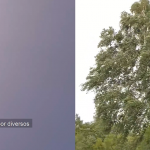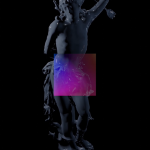Saint Sebastian was a Roman soldier sentenced to death for the confession of his Christian faith. He was tied to a tree and killed by arrows by order of the emperor Diocletian. Later, he was canonized and during the 18th and 19th centuries in Europe his image became an icon of male sensuality and one of an unspeakable secret. At the same time, the myth of Hyacinthus and Apollo narrates an impossible Hellenic love that suddenly meets death. Separated, Apollo endows Hyacinth with eternity on earth with a flower as a commemoration. Both stories create narrative alliances between homosexual desire and plant figures. The underground links between plants (especially the delicate but sexual flowers and vigorous trunks rising) and queer identity subtly appear to raise questions about ties hidden in plain sight, exuberance, and existences that survive if they escape the watchful eye of the hegemonic gaze. The dual channel video contrasts historical figures (3d model of a German polychrome wooden sculpture from the early 15th century) with plant bodies (3d model of a blooming hyacinth). The video progresses as both bodies disarm and allow us to walk through what is under the “crust” of their forms. The plant and the dissident intertwine bathed in a pinkish light. The tragic figure of the homosexual lover finds in the vegetal a model of existence that has been an unrecognized companion in the history of queerness in the Western visual tradition.



